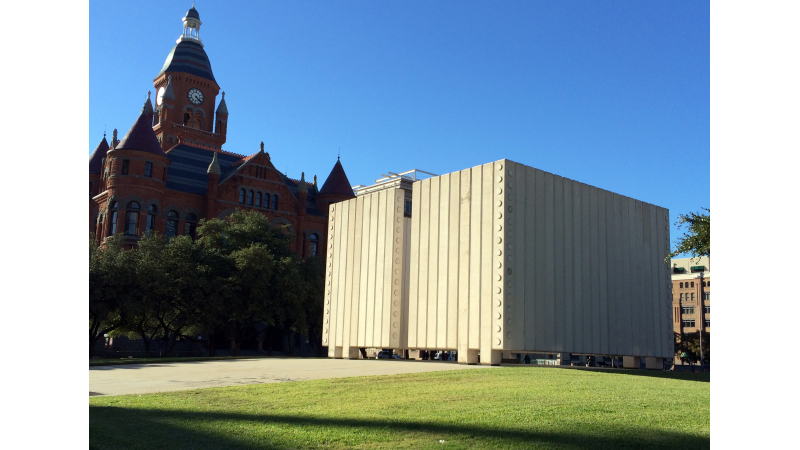 On November 22, 1963, the world's eyes were on Dallas. America's handsome young president, John F. Kennedy, had traveled there with his glamorous wife, Jacqueline, only to be gunned down. Shock and disbelief would linger in the American psyche for months, years, decades.
On November 22, 1963, the world's eyes were on Dallas. America's handsome young president, John F. Kennedy, had traveled there with his glamorous wife, Jacqueline, only to be gunned down. Shock and disbelief would linger in the American psyche for months, years, decades.
On a recent visit, I was drawn, like many people, to the places whose names are ingrained in our collective memory: Dealey Plaza, the Texas School Book Depository (now The Sixth Floor Museum), and the so-called "Grassy Knoll," battered by countless footsteps at once purposeful and aimless. There is still no why for the chaos of that day, just a carefully-mapped sequence of events.
The sites look eerily similar to what I remember from the now-ancient news footage. But nearby, I came upon a presidential memorial (pictured here) I did not anticipate: a concrete block that could just as well have been at a power plant. Built in 1970, the "cenotaph," or open tomb, shuts out the city on all sides, leaving a visitor to contemplate the sky.
Next to Kennedy's name, a granite square reads: "The joy and excitement of John Fitzgerald Kennedy’s life belonged to all men. So did the pain and sorrow of his death. When he died on November 22, 1963, shock and agony touched human conscience throughout the world. In Dallas, Texas, there was a special sorrow. The young President died in Dallas. The death bullets were fired 200 yards west of this site. This memorial, designed by Philip Johnson, was erected by the people of Dallas. Thousands of citizens contributed support, money and effort. It is not a memorial to the pain and sorrow of death, but stands as a permanent tribute to the joy and excitement of one man’s life. John Fitzgerald Kennedy’s life."
Such a sentiment, while noble, cannot erase images that are unerasable: of the President's wife jumping out of the back seat of the limousine, her pink suit stained with blood; of CBS News anchor Walter Cronkite removing his thick black glasses to wipe away tears as he announced Kennedy's death; of Jack Ruby gunning down assassin Lee Harvey Oswald two days later, another shock delivered live on television.
The Sixth Floor Museum offers those iconic images, of course, while also recounting details obscured by time:
• Forty-five minutes after killing Kennedy, Oswald fatally shot Dallas police officer J.D. Tippet. This was the crime for which Oswald was initially charged
• Several weeks before the assassination, Oswald got a job at the book depository filling textbook orders for $1.25 per hour.
• Dealey Plaza was named for George Dealey (1859-1946), an early publisher of The Dallas Morning News and a champion of Dallas.
• As the President's motorcade passed the plaza on November 22, 1963, it was headed to the freeway and the Dallas Trade Mart, where 2,600 people waited in vain to hear Kennedy speak. His place setting remains untouched.
• Less than an hour and a half after a fatally-wounded Kennedy was rushed to Parkland Hospital (now Parkland Health & Hospital System), Mrs. Kennedy was escorting his remains to Air Force One.
The city of Dallas confronts its crater-size role in American tragedy simply and starkly. But it will never fully solve the mystery of what happened and why, and how the murder of the forever-young President shook a generation. Still we go there, wanting answers.






